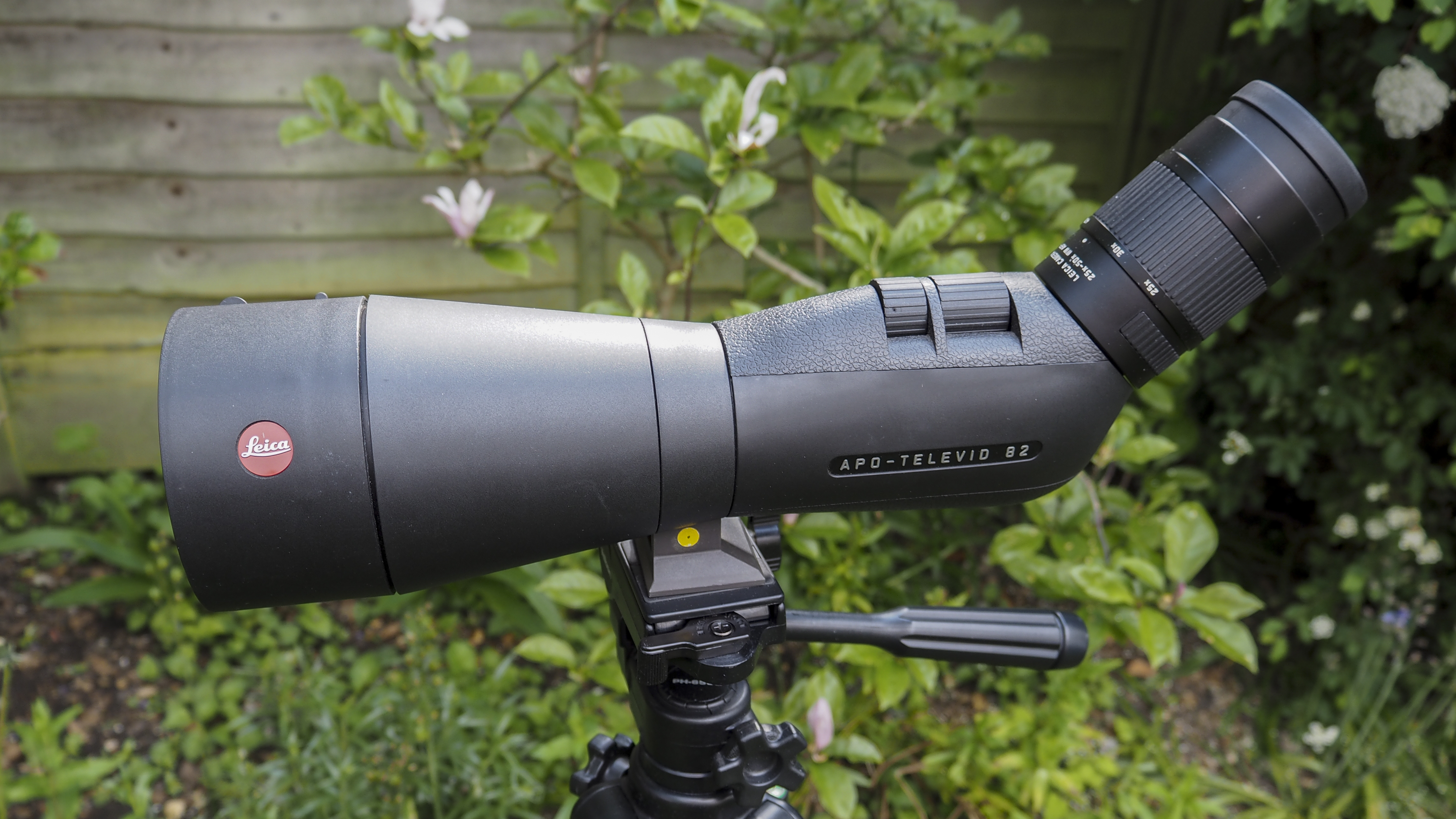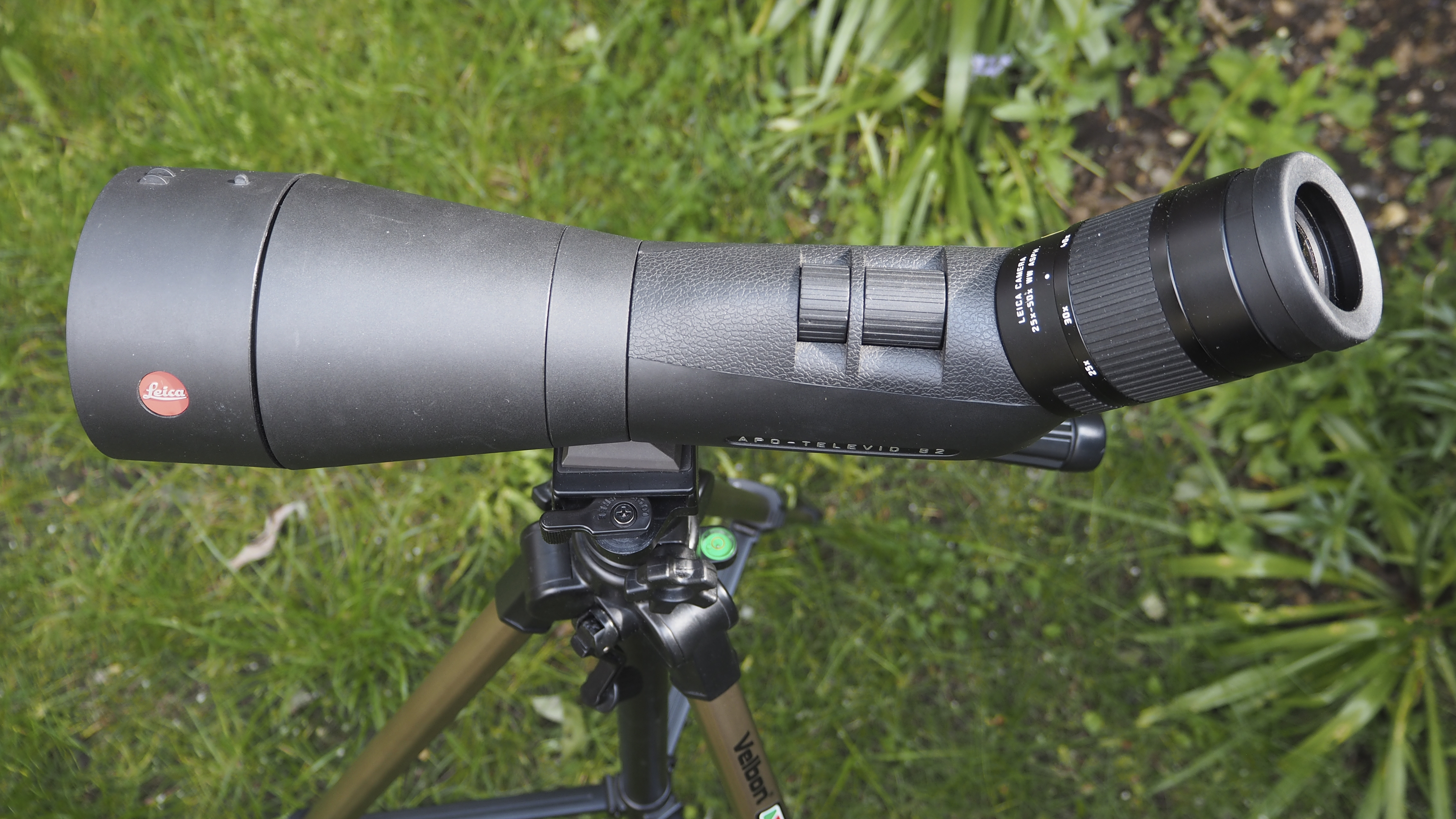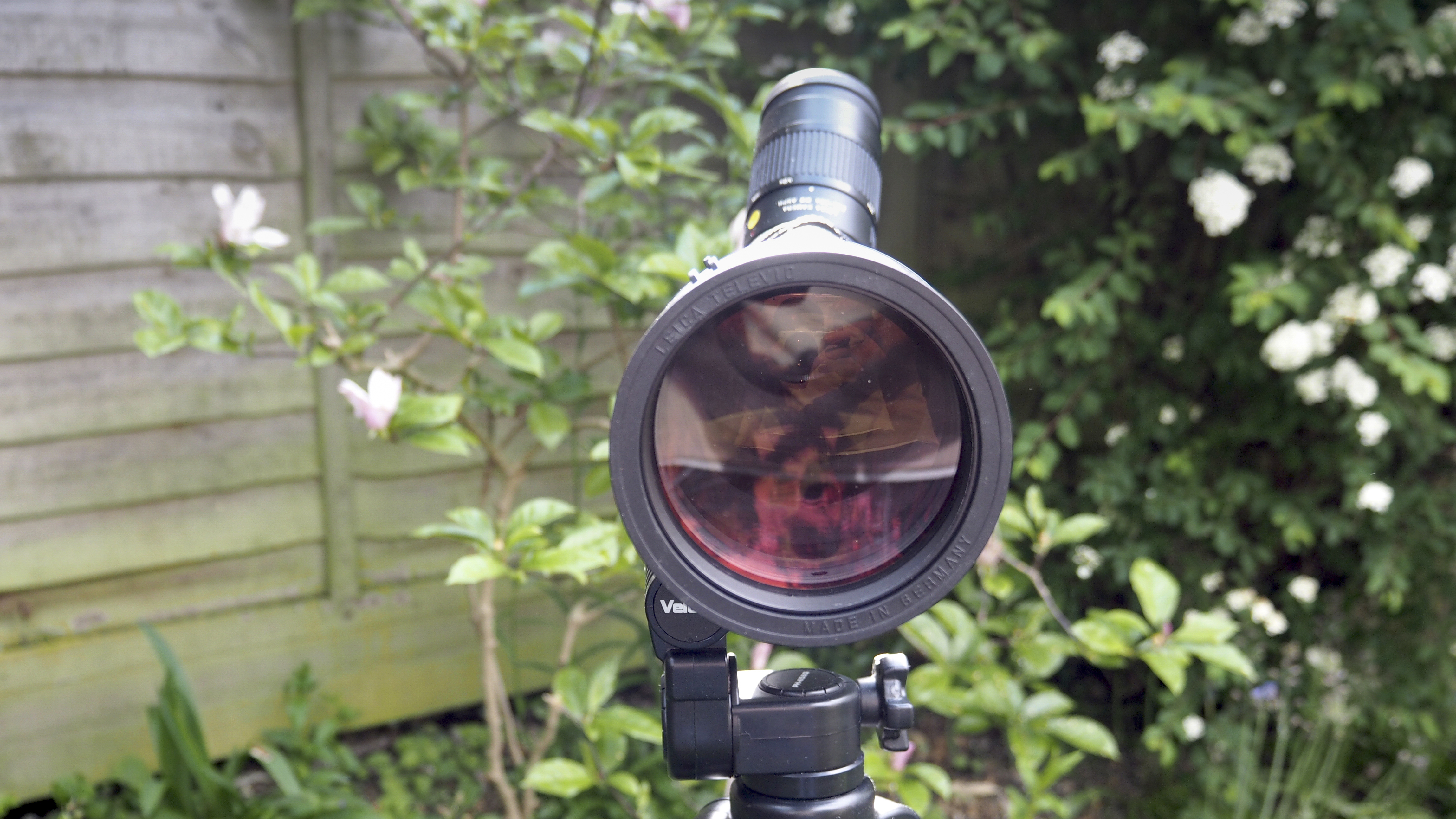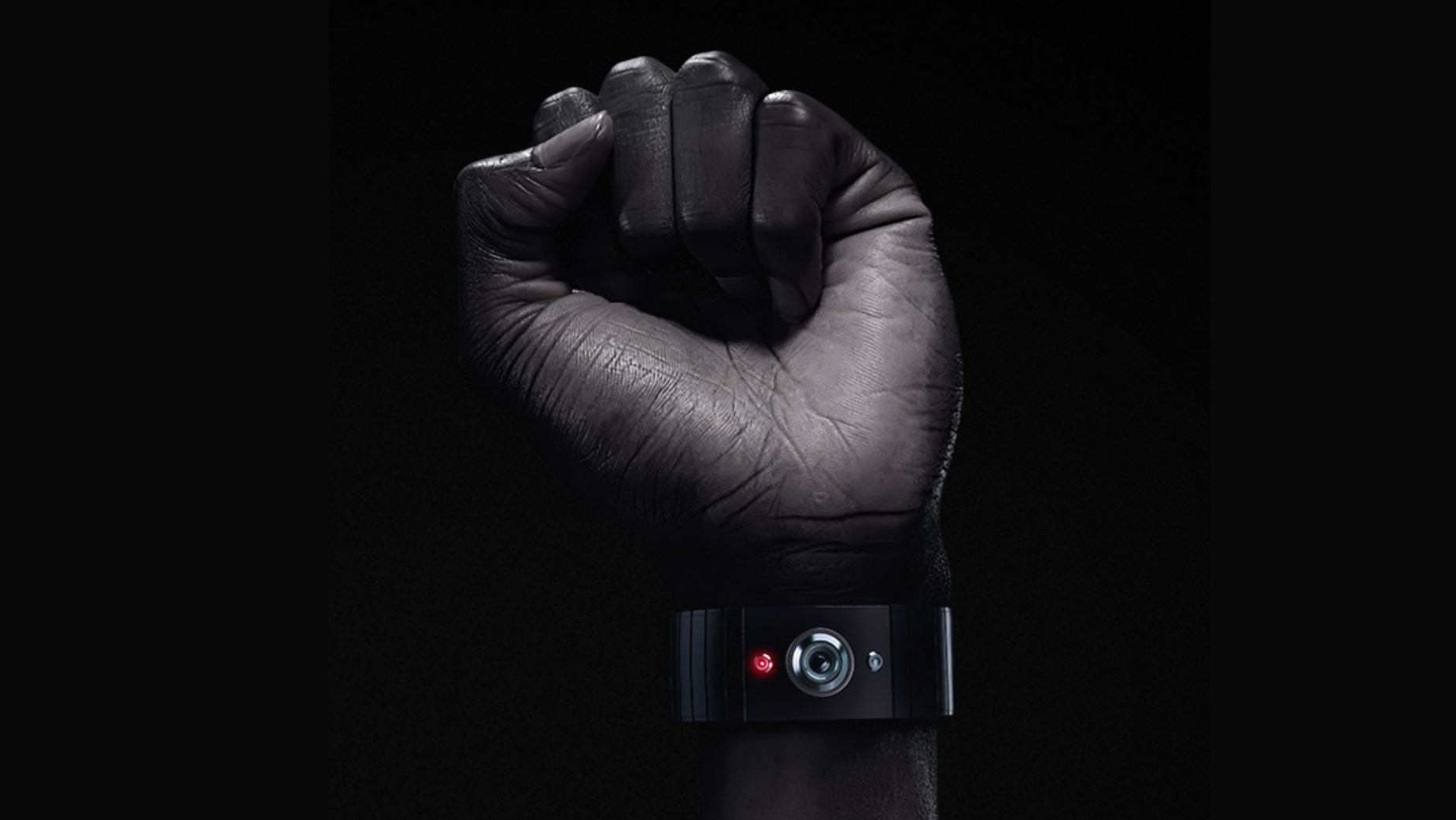Digital Camera World Verdict
Premium look, feel and cost spotting scope intended for nature watching and low light observation. If you want to do either – or both – and have the cash to spare, then the Leica APO-Televid 82 should be right up there on your wish list. It’s not the most portable scope ever, but it has heft where it counts – namely bringing the faraway closer and, thanks to its expert optical construction and set up, delivering image quality so sharp it’s almost overwhelming while doing it.
Pros
- +
Razor sharp close ups from a distance
- +
Sturdy build
- +
Large field of view
- +
Two focus wheels for both ‘rough’ and ‘fine’ tuning of image sharpness
Cons
- -
Relatively expensive
- -
Bulky
- -
Weighty
Why you can trust Digital Camera World
If you’re looking to achieve sharp clarity in otherwise poor conditions, including low or failing light at the day’s end, then this 45° angled Leica APO-Televid 82 scope with a huge 82mm objective lens will be high on your wants list. That’s if you are keen enough to stomach the asking price that a premium brand such as Leica warrants. If you are, then, on paper at least, this very much resembles a German crafted precision device that has sophistication in spades and sufficient ‘scope’ for fine-tuning and additional functionality that should ensure that it delivers years of good service. Let’s investigate how that promise turns out in practice…
Leica APO-Televid 82: Specifications
Magnification: 25-50x
Objective lens diameter: 82mm
Field of view at 1000m: 40-26 metres (via 25x-50x eyepiece)
Closest focusing distance: 3.8 metres
Eye relief: Not given
Weight: 1.52kg
Dimensions: 313x108x101mm
Key features

What we’re getting here is a spotting scope body and a sophisticated eyepiece with zoom functionality. At the heart of the Leica APO-Televid 82 angled scope is a 82mm objective lens that gives it its name, which, when combined with fluoride coating, is claimed to increase light yield by 6%. There are two versions of this scope available - an angled viewing version (where the viewfinder attaches to the top at a 45° angle), or a straight version, where the eyepiece attaches to the rear. The eyepiece supplied with our scope was a 25x to 50x variety, which we found provided plenty of ‘poke’ in bringing the faraway closer while providing a decent field of view with it.
At the base of the unit a tripod thread is provided. The size and weight of the device is such that practical use necessitates mounting on a tripod at all times.
Build and handling
The Leica APO-Televid 82 scope features rubber coated die-cast magnesium housing that is nitrogen-filled and waterproofed up to five metres, according to its manufacturer. Thanks to the water and dirt repellent AquaDura lens coating, moisture and dirt are barely able to take hold – which is exactly as it should be given this is a premium scope for which a premium outlay is being requested.
Focusing with this scope is achieved via two ridged dials – or rollers – located just in front of where the angled eyepiece section of the scope is attached. The dial nearest to the user is for what the manual refers to as ‘rough focusing’ – with the second dial nearer the front end being for fine-tuning. The fact that there are two focus dials provided shows that Leica is serious about its users being able to get not only a sharp view, but moreover a very sharp view.

In practice we found we were using the first, larger/thicker wheel in the main to find and zero focus in on our subject and – once we were satisfied we had the sharpest image we were going to get – just tweaking it a little with the second dial. Whether a nudge back and forth on the second dial made much difference in truth we found it hard to tell, but its presence is reassuring nonetheless. It reminded us of the infamous scene in the movie Spinal Tap with the amp that goes up to 11 – for when the group wants to go ‘one louder’.
At the front end of the Leica APO-Televid 82, the lens hood protecting the unit from glare is extendable, and it’s recommended that this should always be pulled out during viewing to protect from side/stray light, as well as any fingerprints. At the opposite end of the scope, the provided eyepiece is adjustable, should the user be viewing with or without spectacles. For those of us wearing glasses the eyepiece cup should remain screwed tight, so the entire field of view is visible, whereas those without glasses are instructed to turn the eyepiece cup anticlockwise until they hear a click, for optimum viewing.
Performance

While the Leica APO-Televid 82 is reasonably weighty and chunky to transport in the average rucksack or man bag, it’s once we get set up on a tripod with this option, whereby our hands are free to zoom in, focus and then fine tune said focus, that it really comes into its own. The circular image it provides is one of the sharpest we’ve seen – so much so that you feel you can almost reach out and touch with a fingertip whatever it is you’re viewing from afar.
The use of a sturdy tripod is recommended at all times with this device – and it’s best to make sure it is securely fastened to the tripod plate to prevent it swiveling around, or any distracting movement, when adjusting focus on the barrel of the scope itself.
Leica APO-Televid 82: Verdict

While Leica APO-Televid 82 is expensive, it can be said to be reassuringly so; this is a product that should provide you with years of observation that is the very definition of crystal clear, whether you’re looking to observer skittish wildlife or simply bring the far away up close and personal.
Should you want to attach a camera to indulge in the art of digiscoping, this is available with use of an optional digital adapter from Leica. Likewise optional is a padded outer jacket, or case, to protect the unit further against accidental bumps and scratches, chiefly when transporting it.
In short the Leica APO-Televid 82 impresses with its optical excellence and versatility, even if we do pay a price to be as impressed as we are.
Read more:
• Best spotting scopes
• Best binoculars
• Best night vision binoculars
• Best monoculars
• Best binocular harnesses
• Best binocular tripod adapter
Gavin has over 30 years’ experience of writing about photography and television. He is currently the editor of British Photographic Industry News, and previously served as editor of Which Digital Camera and deputy editor of Total Digital Photography.
He has also written for a wide range of publications including T3, BBC Focus, Empire, NME, Radio Times, MacWorld, Computer Active, What Digital Camera and the Rough Guide books.
With his wealth of knowledge, Gavin is well placed to recognize great camera deals and recommend the best products in Digital Camera World’s buying guides. He also writes on a number of specialist subjects including binoculars and monoculars, spotting scopes, microscopes, trail cameras, action cameras, body cameras, filters and cameras straps.


